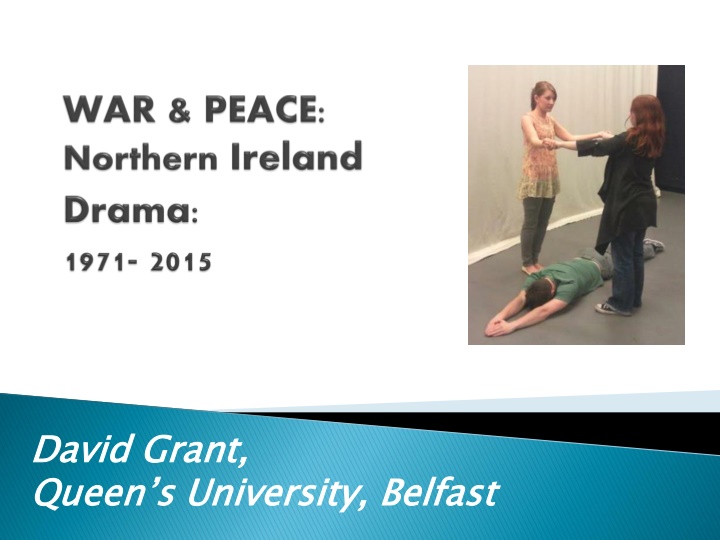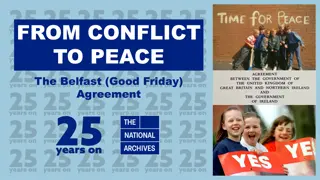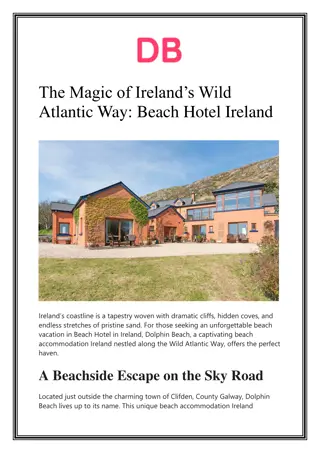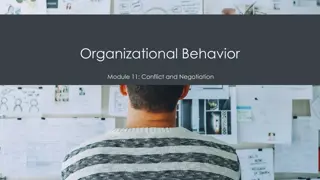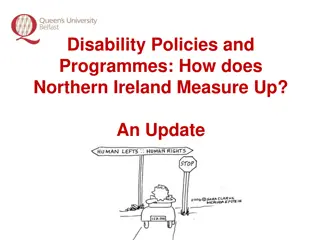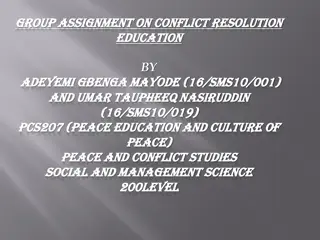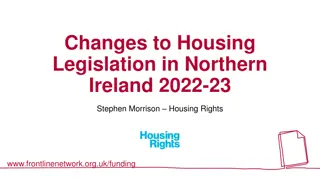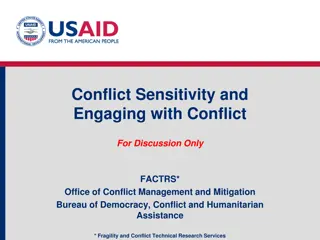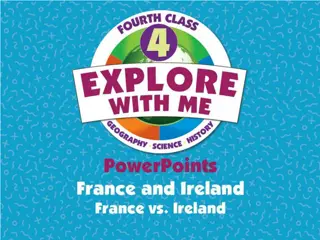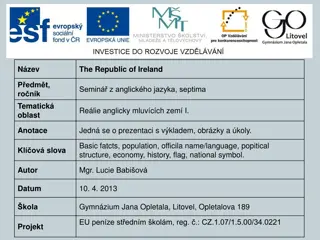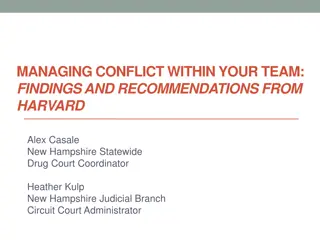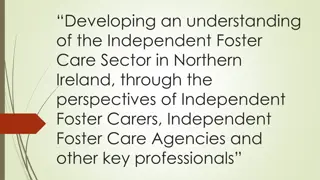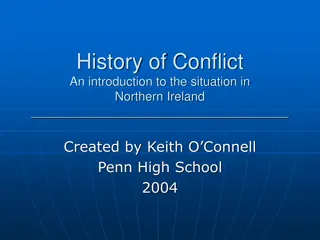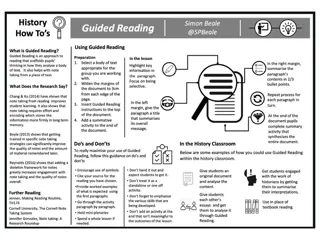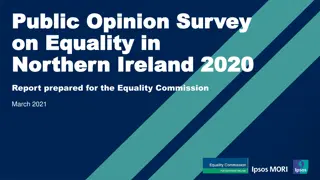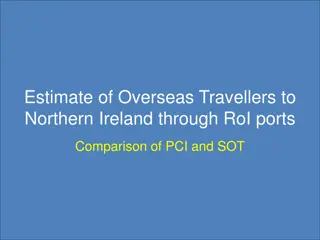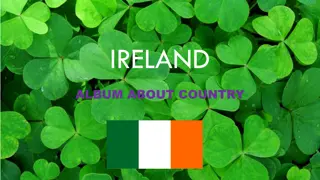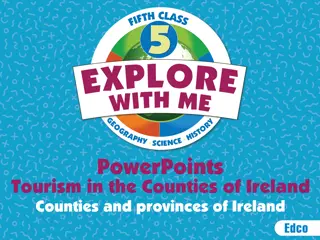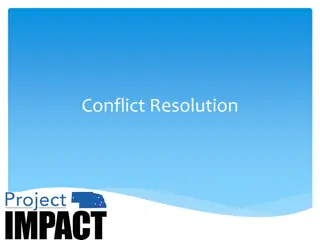Theatrical Responses to Conflict in Northern Ireland
Delve into the journey of how Northern Ireland's mainstream theatres and community-based practices have addressed the violence during the Troubles era and evolved alongside the progressing Peace Process. Witness how plays like "The Flats" and "We Do It for Love" capture the complexities of the time, reflecting on adult memories and childhood friendships. Explore key moments like the Good Friday Agreement and the impactful shift towards community-focused initiatives. Uncover the power of theatre as a tool for reconciliation and storytelling in times of conflict.
Download Presentation

Please find below an Image/Link to download the presentation.
The content on the website is provided AS IS for your information and personal use only. It may not be sold, licensed, or shared on other websites without obtaining consent from the author.If you encounter any issues during the download, it is possible that the publisher has removed the file from their server.
You are allowed to download the files provided on this website for personal or commercial use, subject to the condition that they are used lawfully. All files are the property of their respective owners.
The content on the website is provided AS IS for your information and personal use only. It may not be sold, licensed, or shared on other websites without obtaining consent from the author.
E N D
Presentation Transcript
David Grant, Queen s University, Belfast David Grant, Queen s University, Belfast
1971-1994 The Troubles When are we ever going to get a Peace Product? Playwright Dave Duggan Somewhere between a wee bit of bother and Civil War Playwright Damian Gorman 1994-2015 ... The Peace Process
How the mainstream theatres addressed the violence from 1971-1998 How the initiative has shifted to community- based practice as the Peace Process has progressed The Theatre of Witness as a case study
First produced in1998, the year of the Good Friday Agreement, a key moment in the Peace Process An adult memory of a childhood friendship between two young boys in 1970, just before the start of the Northern Ireland Troubles The adult actors play themselves as children symbolising the connection between the two years
First produced in1998, the year of the Good Friday Agreement, a key moment in the Peace Process An adult memory of a childhood friendship between two young boys in 1970, just before the start of the Northern Ireland Troubles The adult actors play themselves as children symbolising the connection between the two years
The Flats (1971)
The Hidden Curriculum by Graham Reid Dockers by Martin Lynch Tea in a China Cup by Christina Reid
Translations by Brian Friel (1980) Observe the Sons of Ulster Marching Towards the Somme by Frank McGuinness (1985) 1980s
Daragh Carville Damian Gorman Marie Jones Martin Lynch Nicola McCartney Owen McCafferty Gary Mitchell 1999
Rooted in the local community Tends towards the benefit of that community Actively involves the participation of local people Reflects local themes and experience Professional involvement should be aimed at leaving skills in the community Community Drama places more emphasis on process than on product Grant (1993), Playing the Wild Card
Ballybeen Community Theatre (Protestant) Dockward Community Theatre (Catholic) Real World Theatre Company (Disabilities) Stone Chair Community Theatre (Catholic) Tongue n Cheek Theatre Company (Catholic) Shankill Theatre Company (Protestant)
Martin Lynch Marie Jones
The word spoken heard languages, helps make dialogue possible word the gesture, the sound the silence not the tone, the movement also spoken will never be the word heard...The theatre theatre, sum of all all possible. If I do not understand the word, I understand the gesture sound; if not the sound, silence; if not the silence the tone movement... The mind also speaks through the senses gesture; if not tone; if senses.
There are many ways of making stage images: Sometimes they emerge from group discussions Sometimes actors allow themselves to be sculpted by a single author. But the approach I want to consider today is how an image can develop from the accumulative actions of a number of collaborators
How is meaning made by both the image- maker and the image-viewer? This can be understood as a dialogue, and as Bakhtin pointed out, dialogue is initiated by the hearer, or in this case the viewer Making images through the process of Image Theatre is an embodied process We think through our bodies
As Merleau-Ponty expressed it, the body converts a certain motor essence into vocal form (107) One could imagine gesture as the origin of spoken language... A special kind of oral motility. Speech on this view would be a sophisticated movement of the body (ibid.) Gestures are both products and active producers of brain organisation (128)
Changing 1993 Changing Pers Persp pectives ectives 2012
We tend to stand between the image and audiences by translating images into words. In doing so we impose one interpretation on the images, thus dismissing the possibility that the images may have more than one meaning. (Strecker 1997)
A form of performance in which: the true stories of those who have been marginalised, forgotten or hurt by society are woven into collaborative theatre productions and are performed by the people themselves in spoken word, movement, music and visual imagery . (TEYA SEPINUCK)
Once in a lifetime The longed-for tidal wave Of justice can rise up, And hope and history rhyme Hope for a great sea-change On the far side of revenge
